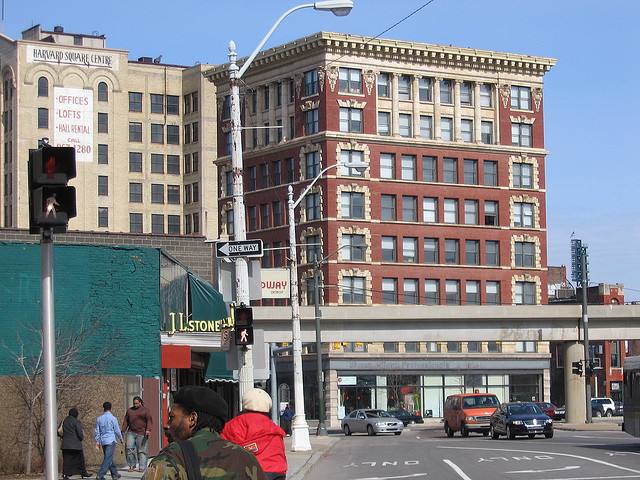Making Detroit’s streets safer
Detroit has long been seen as a city that celebrated its most lucrative export: cars. Known more for its streets and highways than bike paths, planners now envision a streetscape that is more friendly – and safe – to other means of transportation.
A study released earlier this year ranked Detroit as the most dangerous U.S. city for pedestrians outside of the South; and 11th out of 51 metropolitan areas overall.
Its ranking would likely be even worse if it wasn’t for the fact that so few people in Detroit ‒ 1.4 percent ‒ commute by foot.
With so few people walking, why does Detroit rank so high on the danger list?
Steve Dolunt, assistant chief for the Detroit Police Department, said he believes much of the danger has stemmed from a lack of working street lights in years past, though he said this is changing since Mayor Mike Duggan took office in January.
Dolunt also noted that pedestrians, like drivers, can sometimes be distracted by texting, or endangered by wearing dark clothing, particularly on those streets that remain weakly lit.
But it’s not just pedestrians at fault, according to Dolunt; far too often drivers exceed speed limits or fail to come to complete stops at lights or stop signs in the city due to a lack of traffic enforcement.
“A few more traffic stops – not to ticket or arrest ‒ just to give a warning,” would be a good start to help curb pedestrian deaths and collisions, he said.
Dangerous by design
Critics say the city’s streets can add to the peril because they were designed for cars, not people on foot or bicycles, or rushing to catch a bus.
“As Detroit grew in the early 20th century, it did so in a way that made sense at the time, with relatively low (population) density and heavy reliance on automobile transportation,” said Charles Ballard, a professor of economics at Michigan State University and author of "Michigan's Economic Future."
The population of Detroit, now less than 700,000, has been declining since the early 1950s, when it topped out at roughly 1.8 million. Residential areas now have blocks of uninhabited properties and miles of underutilized roads.
“As I see it, the turnaround of Detroit presents us with a huge opportunity to redesign the city in a more sustainable way with denser development, decent public transportation, and plenty of green space,” Ballard said.
Alessandra Carreon, board member of the Detroit chapter of the United States Green Building Council, said incorporating a “complete streets” concept across the city will make Detroit more livable, safe and environmentally friendly. “Complete streets” refers to design that makes streets more accessible to pedestrians, bicyclists and people using public transportation as well as drivers.
Detroit Future City, an urban design plan funded by the Detroit Economic Growth Corporation and philanthropic organizations, has made complete street design one of its top priorities. In its executive summary released two years ago, Detroit Future City promised, among other things, to add more greenery along highways to reduce pollution, walking trails, and a more integrated public transportation system extending far beyond downtown by 2030.
One immediate concern is the state of public transportation, which in Detroit has long consisted of often unreliable and badly coordinated buses, a problem that Mayor Duggan has pledged to improve.
“This is the only major metropolitan area in the country where you can’t take public transportation downtown from the airport,” John Hertel, director of SMART, the suburban bus system, has said.
In the plan aimed for 2030, the integrated public transit system and walking trail wouldn’t just be centered on downtown. It would stretch from 8 Mile southbound.
Dan Kinkead, director of projects at Detroit Future City, said he is confident that Detroit can achieve the goals set out in the executive summary, resulting in a city that is “truly sustainable.”
Chelsea Maralason is a student at Wayne State University.
See what new members are saying about why they donated to Bridge Michigan:
- “In order for this information to be accurate and unbiased it must be underwritten by its readers, not by special interests.” - Larry S.
- “Not many other media sources report on the topics Bridge does.” - Susan B.
- “Your journalism is outstanding and rare these days.” - Mark S.
If you want to ensure the future of nonpartisan, nonprofit Michigan journalism, please become a member today. You, too, will be asked why you donated and maybe we'll feature your quote next time!


 Detroit is one of the nation’s most dangerous cities for pedestrians. (Photo by Flickr user jodelli; used under Creative Commons license)
Detroit is one of the nation’s most dangerous cities for pedestrians. (Photo by Flickr user jodelli; used under Creative Commons license)